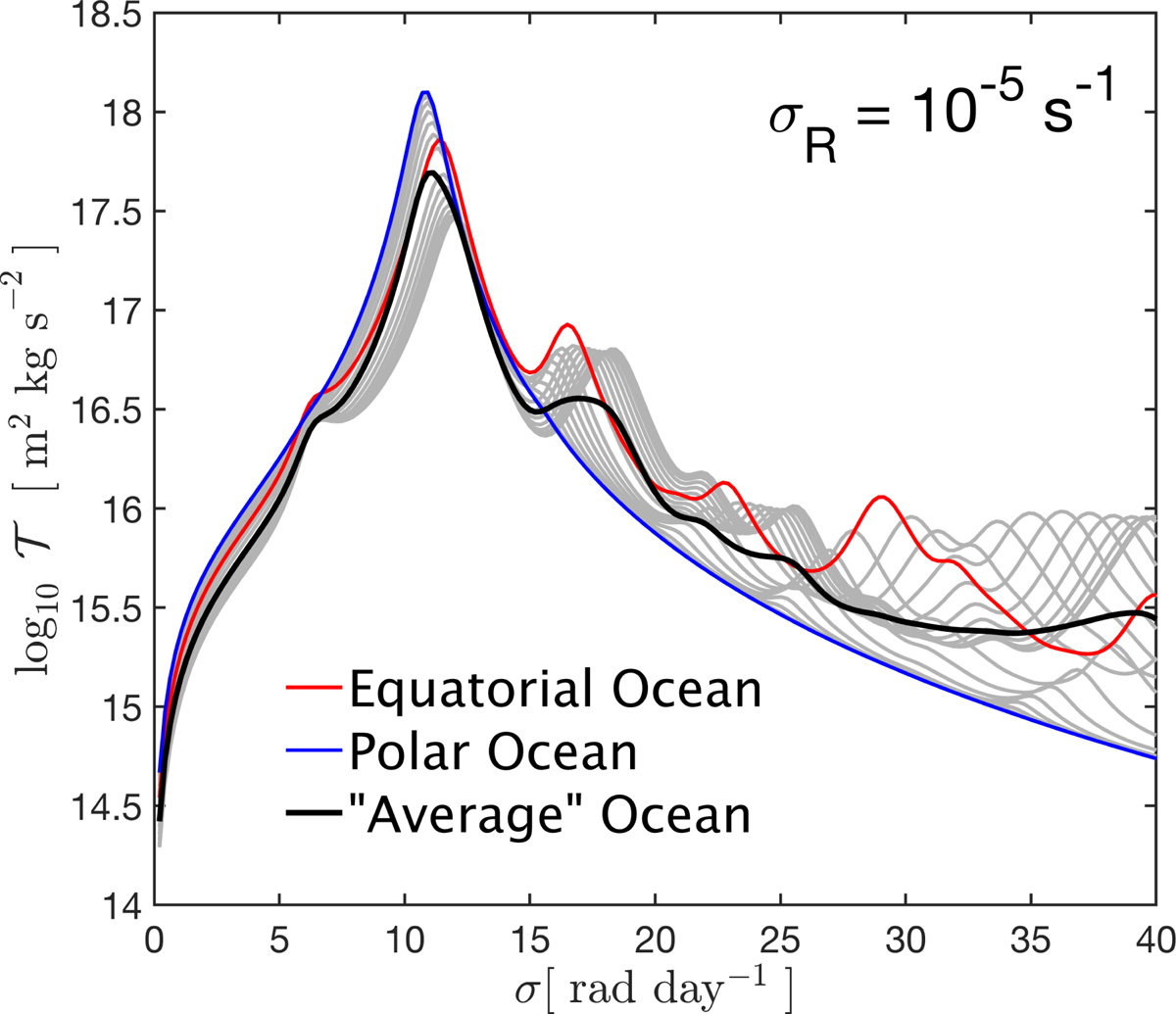Fig. B.1.

Download original image
Drifting effect of the continental cap on the oceanic response: the tidal torque of a hemispheric ocean is plotted as a function of the forcing semi-diurnal frequency for different positions of the center of the ocean. With longitudinal symmetry, the latter is defined by the latitude of the oceanic center, which evolves according to Figure 1. The drifting effect on the resonances ranges from position shifting and attenuation for small forcing frequencies to major distortion in the spectrum at larger frequencies. Extreme distortion occurs in the polar oceanic scenario: the major resonance around 11 rad/day reaches a maximum relative to other configurations and the rest of the resonances are absorbed into the background leaving a unimodal spectrum. This behavior makes it important to take into account the position of the hemispherical cap into the model (Figure 1).
Current usage metrics show cumulative count of Article Views (full-text article views including HTML views, PDF and ePub downloads, according to the available data) and Abstracts Views on Vision4Press platform.
Data correspond to usage on the plateform after 2015. The current usage metrics is available 48-96 hours after online publication and is updated daily on week days.
Initial download of the metrics may take a while.


